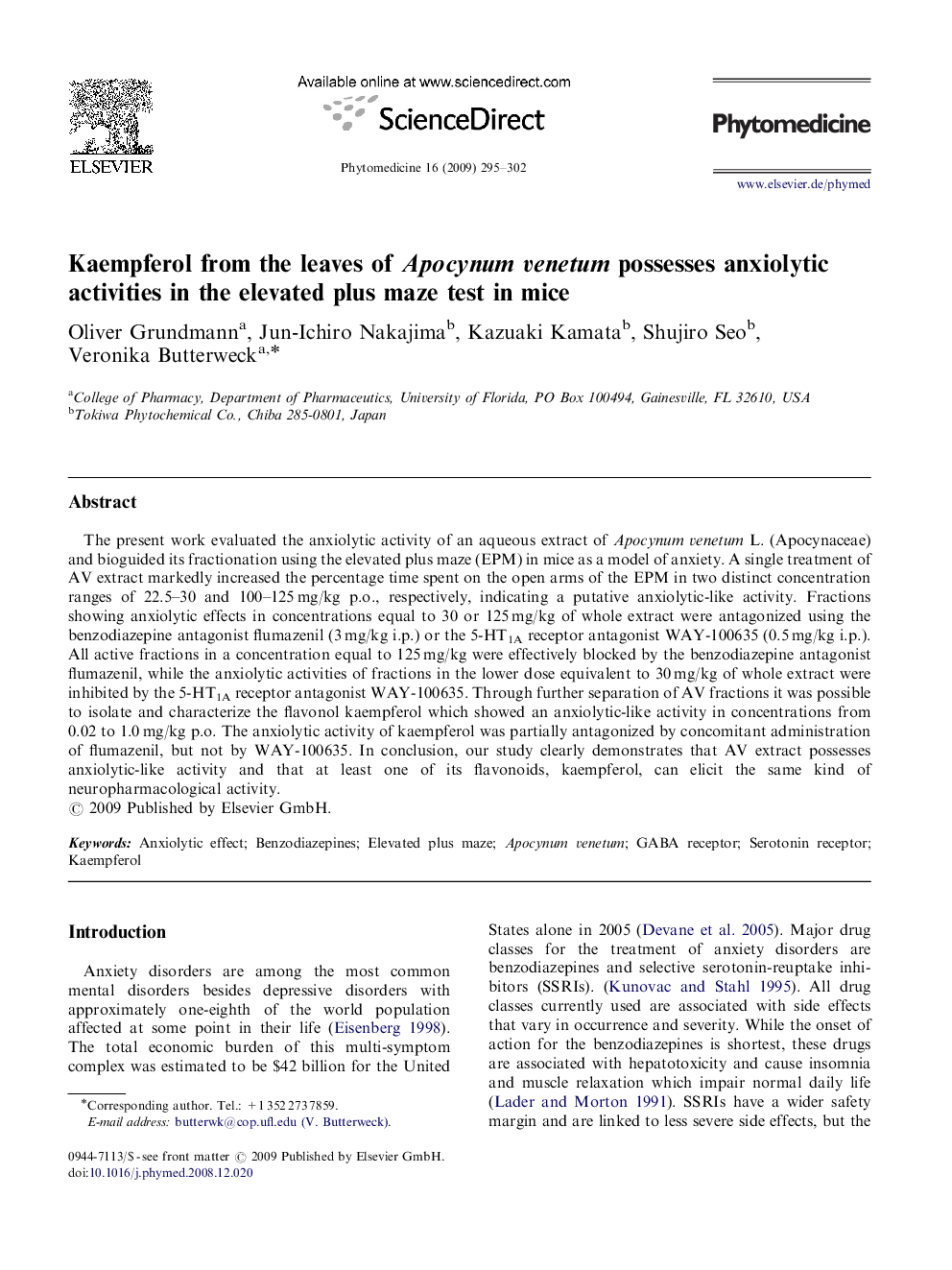| Article ID | Journal | Published Year | Pages | File Type |
|---|---|---|---|---|
| 2497305 | Phytomedicine | 2009 | 8 Pages |
The present work evaluated the anxiolytic activity of an aqueous extract of Apocynum venetum L. (Apocynaceae) and bioguided its fractionation using the elevated plus maze (EPM) in mice as a model of anxiety. A single treatment of AV extract markedly increased the percentage time spent on the open arms of the EPM in two distinct concentration ranges of 22.5–30 and 100–125 mg/kg p.o., respectively, indicating a putative anxiolytic-like activity. Fractions showing anxiolytic effects in concentrations equal to 30 or 125 mg/kg of whole extract were antagonized using the benzodiazepine antagonist flumazenil (3 mg/kg i.p.) or the 5-HT1A receptor antagonist WAY-100635 (0.5 mg/kg i.p.). All active fractions in a concentration equal to 125 mg/kg were effectively blocked by the benzodiazepine antagonist flumazenil, while the anxiolytic activities of fractions in the lower dose equivalent to 30 mg/kg of whole extract were inhibited by the 5-HT1A receptor antagonist WAY-100635. Through further separation of AV fractions it was possible to isolate and characterize the flavonol kaempferol which showed an anxiolytic-like activity in concentrations from 0.02 to 1.0 mg/kg p.o. The anxiolytic activity of kaempferol was partially antagonized by concomitant administration of flumazenil, but not by WAY-100635. In conclusion, our study clearly demonstrates that AV extract possesses anxiolytic-like activity and that at least one of its flavonoids, kaempferol, can elicit the same kind of neuropharmacological activity.
